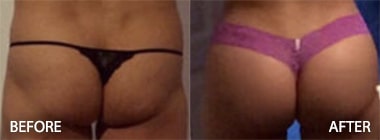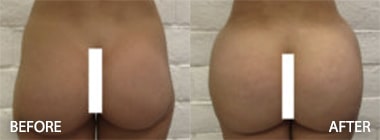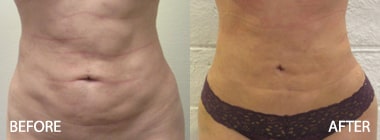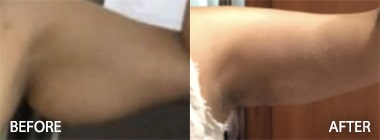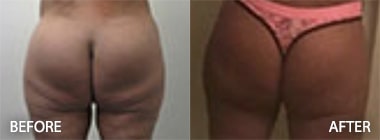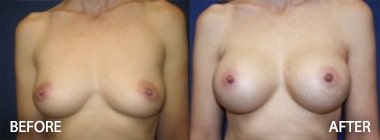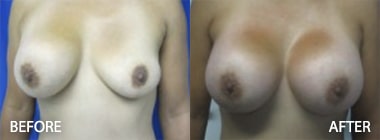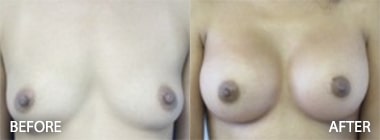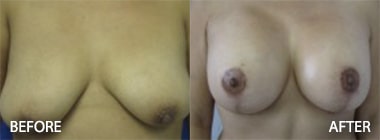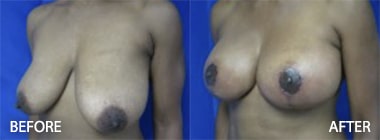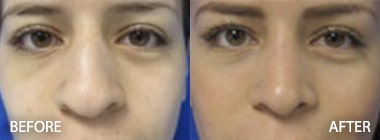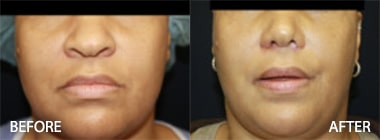The Effect of Radiation on Complication, Reoperation, and Capsular Contracture Rates in Implant-Based Breast Reconstruction with the Introduction of Skin-Sparing Mastectomy (SSM) Techniques
Introduction
Skin-sparing mastectomy with expander/implant reconstruction has been evaluated little in the literature. A PubMed search of “skin sparing mastectomy” AND “tissue expansion” OR “implant” revealed 30 original articles with the first articles of any relevance being published within the last 10 years. The investigation into the skin-sparing techniques and expander/implant reconstruction is but in its infancy, but salient literature findings will be reviewed forthwith.
Skin-sparing mastectomy was brought to the forefront by Toth1 et al. in 1991, Toth described SSM (skin-sparing mastectomy) as excision of the nipple-areola complex and biopsy site, while preserving the native skin envelope as much as possible. It was the preservation of the skin envelope and architecture that was of seminal importance. With the IMF and more of the envelope architecture preserved, immediate breast construction was to be facilitated, the number of reoperations, decreased, and cosmetic outcome, likely buoyed.
The ideal SSM would have flap devoid of all breast tissue but of adequate blood supply to prevent flap necrosis and delayed wound healing. While skin flap necrosis is a known complication of SSM, smoking, radiation, and diabetes have been shown to increase rates of skin necrosis and infection.
For many years in breast reconstruction, the expander/implant option was not available and autologous tissue was the mainstay. McGraw et al.2 found a higher complication rate after tissue expansion than after TRAM reconstruction. However, Rosen and colleagues3 found that the complication rates were similar between TRAM and tissue expander/implant reconstruction Kroll and Baldwin4 in 325 postmastectomy reconstructions showed failure rates for tissue expansion of 21% and TRAM flap of 3%.
Spear’s study 5 in 2000 examined 40 consecutive patients undergoing expander/implant placement and radiation during a 7 year period. He recorded the number of complications, operations, and Baker classification in this study.
Complications were more common in the radiated group, 36% vs.7% in the control. The infection rate was 4% in the radiated group and 0% in the control group. The capsular contracture rate was 21% in the radiated vs. 0% in the control group. Finally, 32% of radiated breasts with implants ultimately needed the addition of a flap. The need for additional flap procedures in some of the radiated implant cases resulted in a mean of 2.6 procedures compared with 2.3 for controls.
Methods
A retrospective chart review was performed for 132 patients undergoing 227 implant-based breast reconstructions over a 4 year period (2006-2009) at the University of Kansas Medical Center as the oncologic surgeons began to introduce skin-sparing mastectomy techniques. The senior author performed all of the reconstructions and follow-up (follow-up range from 12 to 36 months). Data extraction was performed, and results were tabulated using Microsoft Access. All personal identifiers were removed from the data as stipulated Human Subjects Review Committee. These data were then grouped and analyzedand divided into immediate and delayed groups, skin-sparing and conventional mastectomy groups, and irradiated and non-irradiated groups. Complication, reoperation, and capsular contracture rates were then calculated for each of these groups. Chi-square tests were executed, and p –values were used to evaluate the data for statistical significance.
Procedural Details
Subpectoral expander placement with creation of sling with Alloderm, FlexHD, Neoform, or Strattice. Mentor and Inamed expanders/implants used. No attempt was made to standardize initial fill volumes, time to full expansion, or final volumes achieved
Results
132 total patients received 227 mastectomies, of which 64% were conventional mastectomy skin envelope excisions and 33% were SSMs (3% were Wise pattern excisions). The average age of patients was 52 with the following ethnic breakdown: 84% White, 5% African-American, 5% Hispanic, 1% Asian, 5% other. 2% were current smokers, 18% had a history of smoking, and 80% were nonsmokers. Only 8% of the group was diabetic.
The reoperation, complication and capsular contracture rates were calculated and tabulated for the data set as a whole, immediate and delayed, SSM and conventional, and irradiated and non-irradiated. (Figures 1 through 5b)
Discussion
In reviewing the data as a whole, one can see the overall complication rates and reoperation rates (Figures 1 and 2).
The overall complication and reoperation rates of 15% and 10% compare favorably to reviewed series. In this series, half of the infections necessitated removal of implants, while the other 50% were managed with antibiotics. 75% of exposures (6/8) were treated with removal, while two received irrigation and closure. Finally, 2 of the 3 hematomas required surgical drainage.
Immediate vs Delayed
Those breast reconstructions that were delayed had a greater number of reoperations, but similar complication rates (Figures 3a and 3b). The reoperation rate was stastically different between the two groups (p<.0001). When examining the data for the causes for delay, the delays were largely due to comorbidities, need for radiation, nature of resection, side to side size disparity, etc. and usually reflected more challenging cases requiring more stages. The immediate group showed a higher rate of capsular contracture (5% vs. 0%), though this difference was not statistically significant (p=0.21).
|
|
Figure 3b
|
|
|
|
|
Complication
|
None
|
|
|
Immediate
|
30
|
167
|
197
|
|
Delayed
|
6
|
24
|
30
|
|
|
|
|
227
|
|
|
ChiSq Test Statistic
|
0.4442
|
|
|
|
P-Value
|
0.5
|
|
|
|
|
|
|
|
|
Reoperation
|
None
|
|
|
Immediate
|
16
|
181
|
197
|
|
Delayed
|
12
|
18
|
30
|
|
|
|
|
227
|
|
|
ChiSq Test Statistic
|
24.4675
|
|
|
|
P-Value
|
<0.0001
|
|
|
|
|
|
|
|
|
Capsular contraction
|
None
|
|
|
Immediate
|
10
|
187
|
197
|
|
Delayed
|
0
|
30
|
30
|
|
|
|
|
227
|
|
|
|
|
|
|
|
P-Value (Exact Test)
|
0.21
|
|
Skin-sparing vs. Conventional Mastectomy
|
|
Figure 4b
|
|
|
|
|
Complication
|
None
|
|
|
Skin Sparing
|
8
|
66
|
74
|
|
Conventional
|
23
|
130
|
153
|
|
|
|
|
227
|
|
|
ChiSq Test Statistic
|
0.7539
|
|
|
|
P-Value
|
0.39
|
|
|
|
|
|
|
|
|
Reoperation
|
None
|
|
|
Skin Sparing
|
18
|
56
|
74
|
|
Conventional
|
17
|
136
|
153
|
|
|
|
|
227
|
|
|
ChiSq Test Statistic
|
6.6772
|
|
|
|
P-Value
|
<0.01
|
|
|
|
|
|
|
|
|
Capsular contraction
|
None
|
|
|
Skin Sparing
|
6
|
68
|
74
|
|
Conventional
|
5
|
148
|
153
|
|
|
|
|
227
|
|
|
|
|
|
|
|
P-Value (Exact Test)
|
0.18
|
|
Influence of Radiation
|
|
Figure 5b
|
|
|
|
|
Complication
|
None
|
|
|
Radiation
|
14
|
69
|
83
|
|
No Radiation
|
16
|
128
|
144
|
|
|
|
|
227
|
|
|
ChiSq Test Statistic
|
1.5212
|
|
|
|
P-Value
|
0.22
|
|
|
|
|
|
|
|
|
Reoperation
|
None
|
|
|
Radiation
|
16
|
67
|
83
|
|
No Radiation
|
12
|
132
|
144
|
|
|
|
|
227
|
|
|
ChiSq Test Statistic
|
5.8316
|
|
|
|
P-Value
|
0.02
|
|
|
|
|
|
|
|
|
Capsular contraction
|
None
|
|
|
Radiation
|
2
|
81
|
83
|
|
No Radiation
|
4
|
140
|
144
|
|
|
|
|
227
|
|
|
|
|
|
|
|
P-Value (Exact Test)
|
1
|
|
Conclusions
The field of implant based reconstruction is constantly undergoing change and with the advent of dual chambers, anatomic and cohesive variations, texture modifications, and ever evolving proprietary manipulation, implant-based reconstruction data will remain difficult to standardize over any prolonged period of time. Similarly, size of implant, initial volumes, final volumes, and rapidity of expansion are tailored to meet patient goals and expectations and can never fully be standardized. The development of skin-sparing and, more recently, nipple-sparing techniques also adds a distinct element to the gamut of variability.
While acknowledging this state of flux, the goal of this study was to determine complication, reoperation, and capsular contracture rates in implant-based reconstruction and the effect of radiation as a skin-sparing paradigm evolved at the University of Kansas Medical Center. While the study showed a trend toward skin-sparing mastectomies reducing the complication rate, the study did not show a positive effect on reoperation rate or rate of capsular contracture. Out of a host of patient comorbidities studied, only radiation exposure negatively impacted reoperation rates but oddly showed no increase in capsular contracture rates. One could argue the valid point that capsular contracture develops over months to years, and this study does not have the long-term follow-up to evaluate this accurately.
The study has a host of limitations in addition to the nature of the topic, which has already been delineated. The most obvious limitation is its retrospective nature. Secondly, follow-up was variable, with most patients being followed from 1 to 3 years. Thirdly, while the conventional mastectomy group could function as its own control from the SSM group due to temporal overlap, the two groups were not of equal size and no attempt was made to match them. Finally, though only one surgeon performed the reconstructions and the follow-up, two surgeons performed the mastectomies. This likely created discrepancies in flap thickness and viability and, ultimately, could have obfuscated complication and reoperation rates.
Article 1: The Role of Telemedicine in the Management of the Cosmetic Surgery Patient
Article 2: Breast Implant Reconstruction after Radiation
Article 3: Breast Reconstruction after Mastectomy
Article 4: Protocol for the Management of Keloid Scars
Article 5: Melanoma and the Role of Sentinel Lymph Node Biopsy
Article 6: Desmoid tumors of Bilateral Breasts
Article 7: The Role of the Paramedian Incision
Come to Hughes Plastic Surgery in Los Angeles and Beverly Hills. You will be glad that you did.
